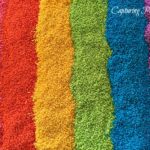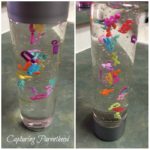It’s time for another fun experiment – a Foaming Fountain Experiment, also known as Elephant Toothpaste (though it is not edible)!
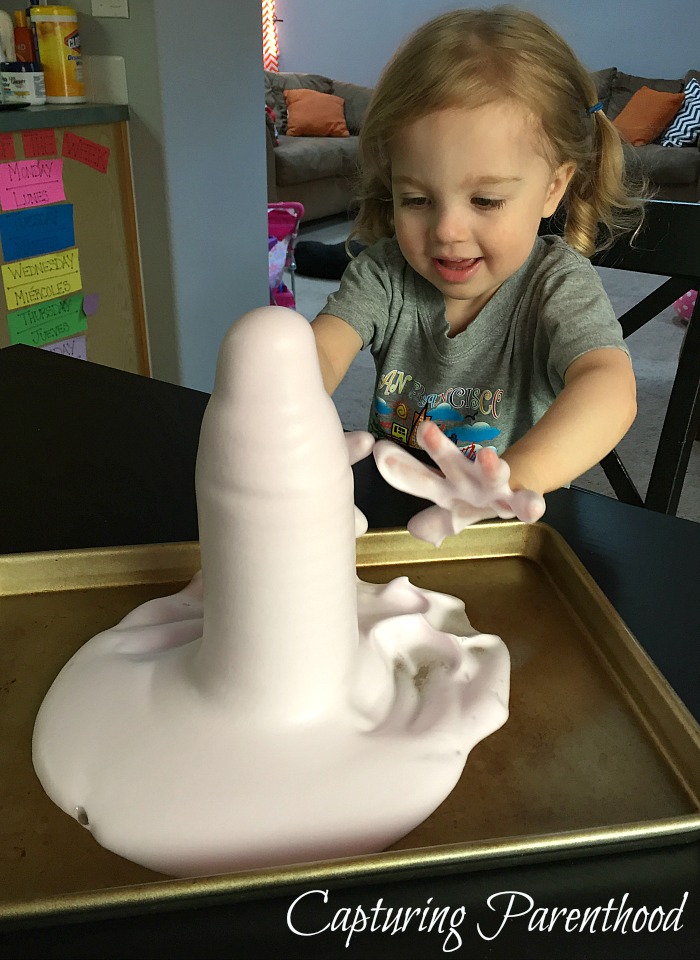
My little nugget loved watching the foam erupt from the water bottle – she was actually the one who dubbed it a “foaming fountain.” But she loved sinking her hands into the foam, even more! What child can refuse squishing their hands into soft, foamy bubbles?
I came across the instructions for this simple experiment over on Navigating By Joy (http://www.navigatingbyjoy.com/2013/02/16/elephants-toothpaste-fun-with-catalysts/). Lucinda states that you should use 6% hydrogen peroxide for this experiment, but I could only find 3% at our local stores. Needless to say, I think the foaming reaction would have been more powerful with the higher percentage of peroxide, but we had a great time conducting the experiment anyway.
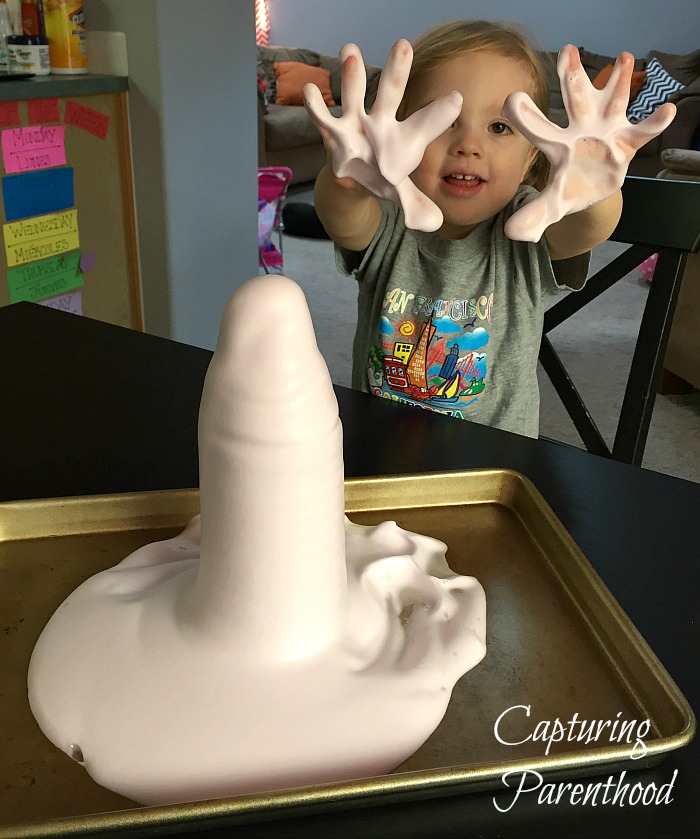
Foaming Fountain Experiment (Elephant Toothpaste)
Supplies:
- 1/2 Cup 6% Hydrogen Peroxide (as stated, we could only find 3%, so that is what we used)
- 1 tsp. Yeast
- 2 Tbsp. Hot Water
- Food Coloring (color of your choice)
- Dish Soap (a couple of squirts)
- Empty water/soda bottle
- Tray or Cookie Sheet (to catch the foam)

Instructions:
- Add the hydrogen peroxide to the empty bottle, and set aside.
- Add the yeast to a small bowl. I chose to use my 2-cup measuring cup (with spout) to make it easier to pour the mixture into the water bottle.
- Add the hot water to the yeast (I used the hottest water from our tap). Stir until thoroughly combined.
- Squeeze two to three squirts of dish soap into the water bottle (with the hydrogen peroxide). Add a couple of drops of food coloring to the water bottle, as well. Give it a good swirl to get everything mixed.
- When you’re ready, pour the yeast mixture into the water bottle, and get ready for a fountain of foam to emerge!
- Feel free to let your kiddos play in the foam – it’s the best part!
So…the science behind this experiment? The yeast acts as a catalyst to remove the oxygen from the hydrogen peroxide. Because the reaction is so fast, it creates tons of tiny bubbles filled with oxygen! Isn’t science grand?
As I mentioned before, I think if we had found a higher percentage of hydrogen peroxide, we would have had an even better chemical reaction. After completing this experiment, I did a little bit more research and found that most Elephant Toothpaste experiments call for 6-10% hydrogen peroxide, which can apparently be found at beauty supply stores, or salons.
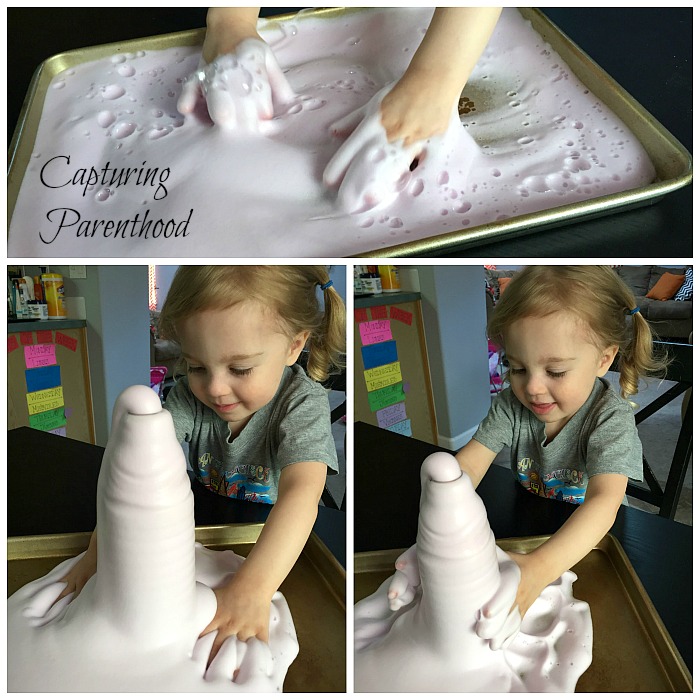
I also stumbled across an adult version for this experiment, which uses 20% hydrogen peroxide, dish soap, food coloring, and potassium iodide (instead of the yeast mixture). These ingredients appear to create a much more forceful fountain, and massive amounts of foam – but the mixture is very hot! Therefore, it’s not a great recipe for the kiddos who will immediately want to reach out and touch the foam. Perhaps you can save this particular method for when your kids get a bit older – or do it for your own enjoyment, after you put the kids to bed. 🙂

